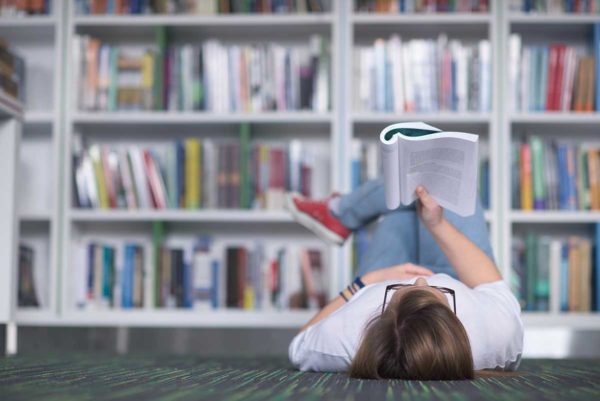
It’s generally accepted that there are seven different learning styles. While most of us fall across the spectrum of each of these styles, facilitating lessons that are engaging on all levels will give your students the best chance of success.
Here we discuss strategies to improve engagement for students of each learning style.
1. Auditory and musical learners
Auditory learners like to hear solutions and examples explained to them, and may gravitate towards music subjects and group learning as a way to understand information. Auditory learners often have a high aptitude for distinguishing notes and tones in music and speech.
Qualities often associated with auditory learners include:
- Possessing a ‘good ear’ for music and tones
- May be distractible
- Likes to talk to self / others / hum / sing
Auditory learners might say words out loud or hum tones to better learn them. This strategy is key for keeping musical learners engaged in class lessons.
How to engage an auditory and musical learner
If you’re a music teacher, you’re in luck. Auditory learners will be engaged from start to finish. For other subjects however, engaging aural learners requires some tact and forethought.
The key here is your voice (and the voice of your students). Write down something on the whiteboard, then read it out loud. Work on your delivery so you can express learning material in interesting and engaging tones. Similarly, encourage your students to read back their own notes to themselves (and the class). Hearing the sound of their own voice and the voices of others is engaging to auditory learners, but it can be a great learning tool for students of all types.
Other strategies you can try include:
- Recording lessons for later listening and reference
- Encouraging auditory listeners to ‘teach others’ verbally
- Seating them away from distractions
2. Visual and spatial learner
Visual learners like diagrams, drawing out concepts, charts and processes. They learn by looking at visual concepts, creating them, and watching other people create them. Visual learners might be organised or creative in their application, and find things like colours and shapes useful.
Visual learners often possess the following qualities:
- Habitual doodlers / drawers
- Observant
- Not easily distracted
- Enjoys planning
- Prefers visual instructions
How to engage a visual and spatial learner
To engage a visual learner in the classroom you’ll want to include elements like maps, diagrams and imagery. If you have a projector, try to include relevant images to go along with the course content. In geography and history, maps are helpful, while for maths and logic, go with diagrams.
Charts, images and diagrams will aid most students, so catering to visual learners doesn’t mean you have to ignore other types. When it comes to self-driven learning, encourage the spatially aware to sketch out their ideas, create mind maps and flowcharts. It should probably come to them naturally, but a bit of prompting can always help.
Other tactics you can use include:
- Sitting visual learners near the front
- Using colour codes and cues
- Encouraging note taking and recopying notes during study
3. Verbal learner

Verbal learning includes both writing and speaking. Verbal learners might have a preference for reading and writing, word games and poems. Verbal learners know the meanings of a broad category of words, can use them effectively, and actively seek out new words to add to their repertoire.
Some qualities associated with verbal learners include:
- Intellectual
- Bookworm
- Good story teller
Verbal learners often seek out careers in journalism and writing, administration, law and politics.
How to engage a verbal learner
Verbal learners will want to write down notes, talk about concepts and potentially present them as well. The trick with verbal learners is knowing what adjacent types of learning apply to them – are they an outgoing or more introspective verbal learner? Some may lean more to talking, while others to reading and writing. Try to cater to preference while also using their verbal abilities to push personal boundaries every once in awhile.
4. Logical and mathematical learner
Perhaps unsurprisingly, mathematical learners err towards careers in programming, accountancy, science, research and other number and pattern-orientated careers. Some qualities associated with mathematical learners include:
- Pattern recognition
- Good with numbers
- Predisposition towards grouping and classification
How to engage a logical and mathematical learner
Mathematical learners will greatly appreciate any type of learning that logically explains the subject at hand. For maths, that’s easy. For other subjects, it requires some effort and planning:
- History and geography: Try to include statistics and classification taxonomy in your lesson plans.
- Literature: Ask your students “What category of book is this?” Or in poetry, have them learn the meters and explain them to other students.
- Music: Teach both musical instrument classification (woodwind etc) and the mathematical relationships between notes.
- Art: A good starting point is the colour wheel and the effects of combining different colours.
With logical students, always look to incorporate a system. If you’re unsure, include the students in the development of that system. They’ll benefit from it greatly.
5. Physical or kinaesthetic learner
Commonly called hands-on learners, kinesthetics prefer to physically engage with the materials of the subject matter. Some qualities associated with physical learners include:
- Preference to ‘get their hands dirty’
- Energetic, may drum fingers or shake legs
- Action-orientated and outgoing
- May de-prioritise reading and writing
Physical learners represent about 5% of the population, and gravitate towards careers with lots of hands on work like emergency services, physical education and sports.
How to engage a physical or kinaesthetic learner
Channeling the energy and excitability of physical learners is key to offering a good lesson. Taking breaks so they can move around can help, but so can encouraging role play and movement within the lesson itself.
Physical interaction is also important. The use of props and models will greatly benefit a kinaesthetic learner. Give them something to grab onto and they’ll process information much better than from a book or whiteboard.
Other strategies to engage physical learners include:
- Encouraging movement during study (don’t punish them for fidgeting)
- Decluttering desks and surfaces so they can focus on learning
6. Social and interpersonal learner
Social learners show preference towards groups and collaboration. Some, but not all, will gravitate towards leadership within a group. Some of the qualities often associated with this type of learner include:
- Extraverted
- Good communicator
- Sensitive and empathetic
It’s important for educators to understand that not all social learners are extraverted or highly communicative, and that they can also be visual, auditory, verbal, logical or physical learners. The interpersonal aspect perhaps better describes the settings in which they are most comfortable, rather than how they absorb information.
As such, teachers should be cognisant of the breadth of variation between different types of social learners. For example, social doesn’t strictly mean verbal. Some social learners prefer to listen in a group setting, rather than on their own.
How to engage a social and interpersonal learner
To engage a social learner, encourage both group collaboration and presentation. Consider:
- Roleplaying historical events or works of literature
- Collaborating on maths problems
- Working as a class on comprehension questions
Interpersonal learners like to ‘do’ and to ‘share’. This can sometimes lead to distraction for other students who are more intrapersonal in their learning habits. To prevent this, try to channel social learners into providing value to the group, giving them tasks that use their energy usefully, with a focus on empathy for their classmates.
7. Solitary and intrapersonal learner
Solitary learners can be visual, auditory, physical, verbal or logical learners. Fulfilling all the needs of the solitary student will ensure they are fully engaged. Some of the qualities often associated with this type of learner include:
- Independent
- Introspective
- Private
Intrapersonal learners may gravitate towards careers with a lot of self determination or motivation, as well as solitary workloads. Think:
- Researchers
- Writers and authors
- Programmers and coders
How to engage a solitary and intrapersonal learner
In a classroom environment it can sometimes be difficult to engage a solitary learner. They might sit silently in the back of the classroom, only to ace the exam at the end of semester. For the educator, it’s important to engage them during class. Provide visual materials, books and learning aids. Designate quiet areas, and collaborate with defined sharing time so the solitary learner can feel adequately prepared.
Mixed learning approach
With large classrooms, it’s not always easy to personalise lessons, but using a mixed learning approach throughout coursework can help you cater to each type of learning style. You may decide to focus on a particular learning type each lesson, or incorporate multiple strategies within each lesson. The most important element is first recognising the differences in student learning – the rest will flow from there.



